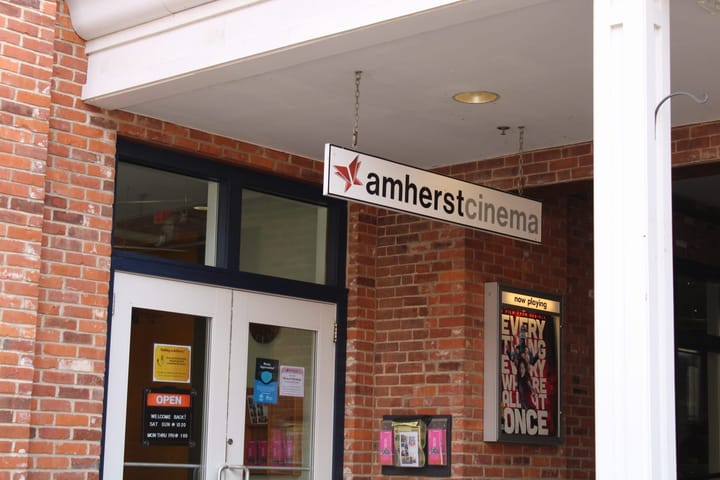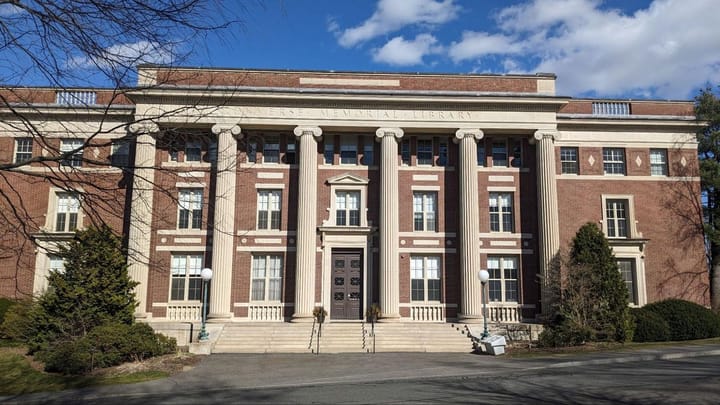College to Go Carbon Neutral by 2030

On Jan. 24, the Board of Trustees voted to approve the Climate Action Plan (CAP), committing the college to carbon neutrality by 2030. Work on the CAP has been ongoing since 2015, when the Office of Sustainability called on Amherst to set a date for carbon neutrality.
The decision is a result of student activism over the years. The initial plan proposed a carbon-neutral deadline of 2035, but the Students for Climate Action (SCA) called for an expedited deadline of 2030 at Student Voices, an event last semester detailing the impact of climate change on students. This plea came after the United Nations published a report stating that the world will begin to experience more severe effects from the changing climate in about 12 years, inciting the updated deadline to 2030.
In 2015, the Sustainability Policy committed Amherst to developing a strategy to convert its energy sources in order to create and maintain a carbon-neutral campus, which set the CAP into motion. The passage of this plan promises to make Amherst go “carbon neutral and beyond,” said Laura Draucker, the director of the Office of Sustainability. She added that in addition to pledging to carbon neutrality in 2030, a major goal is to work “the mission of the college into the plan to make sure we’re embedding some aspect of climate action education into it so students leave here and are able to take that with them as they go.”
Amherst currently operates on fossil fuels, which is an efficient way to limit carbon emissions. However, working within the confines of the existing structure limits the college’s ability to reduce its carbon footprint. One of the most significant barriers to an effective reduction of emissions is the potential for offset emissions, in which one site compensates for emissions through buying the reductions necessary to offset their own emissions at another site.
The process would decrease Amherst’s personal carbon emissions at the cost of increased emissions elsewhere. Draucker commented that offset emissions entail “many unknowns, something you do not want to rely on.”
“A goal of our plan was to not rely on offsets. We knew that if we stuck with our current fossil-fuel based infrastructure, offsets would be a big piece of the puzzle,” Draucker added.
The brainchild of the Advisory Committee, a team of consultants, senior staff, faculty in the finance and environmental studies departments and students, the CAP proposes transitioning the energy structure away from natural gas to geothermal energy sources. The college intends to power campus via hot water as opposed to steam, which requires the installation of geothermal heating and heat pumps powered by reusable energy. To implement this plan, the CAP Advisory Committee will consider the best location for the installation of geothermal wells and determine how best to re-pipe the existing piping infrastructure to accommodate hot water.
The Board of Trustees’ vote determined that it is both financially and technically feasible to transition campus from being powered by steam and fossil fuels to hot water and geothermal sources. Chief of Campus Operations Jim Brassord compared the plan to a legacy decision that was made in 1924, which established a central steam plant to replace coal stoves and fireplaces in Amherst. Now, almost 100 years later, Amherst has made another legacy decision that will shape the college for years to come.
“The task force did not work in isolation,” Brassord said. “There were critical milestones in which we involved other stakeholders outside the committee, whether it be senior staff of the institution or colleagues in finance or environmental studies.” The committee advanced their ideas for alternative energy sources by bringing in community partners for testing.
Students also played a pivotal role in lobbying for the Climate Action Plan. SCA, as well as the Association of Amherst Students Sustainability Climate Task Force, have worked to raise awareness in the Amherst community about the plan. Last year, SCA held an information session during which Draucker spoke about the CAP and hosted an event detailing the impact of climate change on students. After the Student Voices event, members of SCA met with President Biddy Martin to discuss crucial steps towards the passage of the plan. A few students then had the opportunity to meet with the Board of Trustees to share their passion for the plan and to emphasize the significance of passing it, specifically with the goal of carbon neutrality by 2030.
The CAP Advisory Committee will work to develop internal institutional structures that will provide guidance and oversight to the planning, design and ultimate construction of this project. Looking to the implementation of the CAP, Brassord noted that the committee is “eager to move forward quickly.” He added that “the 2030 date reflects how much importance we put on this initiative, with the notion that [the committee] wants to accelerate this.”
Moving forward, both students and administrators remain dedicated to sharing the strategy and plan and involving the community to ensure everyone is familiar with the CAP and understands the process of its implementation.
“When people were given an opportunity to do something concrete, they were all for it,” said Julian Brubaker ’20, a leading member of SCA. “People care about this issue, so the more we can give people concrete steps, the better.”
Gabriel Echarte ’22 expressed his gratitude after the passage of the plan, sharing how he is “extremely proud of and impressed with the school and its administration for making this decision. Obviously, considering everything the school has to balance, this was not an easy decision, and I am extremely appreciative of this. It shows character, that the school believes and will stand behind what it proposes.”
Brubaker shared this sentiment, adding that “we deserve to celebrate. Not often do you work really hard towards something and it happens, especially with a clear win with 2030 as a deadline, so we should celebrate when it does.”





Comments ()